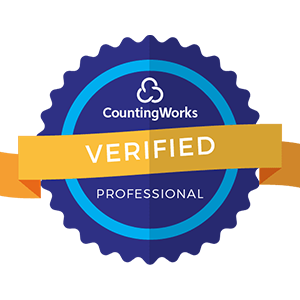In the fast-paced human capital management (HCM) world, one decision can make or break your company's financial rhythm: how often you pay your employees. It might seem like a small detail, but trust us—it's a big deal. Today, we're diving deep into the payroll pool to explore the pros and cons of semimonthly and biweekly pay schedules. Buckle up because this journey through the land of paychecks will change your thoughts about compensation!
The Payroll Puzzle: Why It Matters More Than You Think

Let's face it: payroll isn't exactly the sexiest topic in the business world. But here's a thought that might make you sit up straighter: your payroll schedule affects everything from employee satisfaction to your company's cash flow. It's the heartbeat of your organization, pumping financial lifeblood to every corner of your workforce.
Think about it this way: when did you last feel genuinely excited about payday? That flutter in your stomach, the mental shopping list, the sense of accomplishment—it's a universal experience. Imagine being the wizard behind the curtain, orchestrating that feeling for an entire company. That's the power of payroll.
The Mind-Blowing Stats
Before we dive into the nitty-gritty, let's hit you with some numbers that'll make your head spin:
- According to the U.S. Bureau of Labor Statistics, 36.5% of private businesses pay their employees biweekly, while 19.8% opt for a semimonthly schedule.
- A study by the American Payroll Association found that 65% of employees would experience financial difficulty if their paychecks were delayed by a week.
- Shockingly, 82% of employees admit to spending time at work dealing with personal financial issues, costing employers up to $7,000 per employee annually in lost productivity.
These stats paint a clear picture: payroll isn't just about numbers—it's about people's lives and your company's bottom line.
Semimonthly vs. Biweekly: The Epic Showdown
Now that we've set the stage let's get into the main event. In one corner, we have a steady and predictable semi-monthly schedule. On the other hand, we have the slightly more frequent biweekly contender. Who will emerge victorious? Let's break it down!
Semimonthly: The Consistent Contender
What it is: Employees are paid twice a month, typically on the 15th and the last day of the month.
Pros:
- Predictable payment dates: Employees always know when they're getting paid, making personal budgeting easier.
- Consistent with monthly expenses: Aligns well with most monthly bills and financial obligations.
- Simplified accounting: With 24 payrolls per year, it's easier to calculate monthly and annual payroll expenses.
Cons:
- Irregular pay periods: The number of days between paychecks can vary, which may confuse some employees.
- Potential overtime complications: Calculating overtime can be trickier when pay periods don't align with standard work weeks.
- Less frequent payments: Some employees might prefer more frequent paychecks.
Biweekly: The Frequent Flyer
What it is: Employees are paid every two weeks, resulting in 26 annual payrolls.
Pros:
- More frequent paychecks: Employees receive their wages more often, which can help with cash flow management.
- Consistent pay periods: Each period covers precisely two weeks, making calculating hours worked and overtime easier.
- Two "bonus" months: Employees receive three monthly paychecks twice a year, which can feel like a windfall.
Cons:
- Misalignment with monthly expenses: The schedule doesn't align with monthly bills, which can complicate budgeting.
- Increased payroll processing: Frequent payrolls mean more work for your payroll team or provider.
- Potential for confusion: Some months will have three pay periods, leading to misunderstandings about monthly income.
The Decision Matrix: Finding Your Perfect Payroll Match
Now that we've laid out the contenders, how do you choose? It's not a one-size-fits-all decision. Here's a framework to help you make the right choice for your organization:
1. Consider your workforce:
- Are most of your employees hourly or salaried?
- What's your team's financial literacy level?
- Do you have many part-time or seasonal workers?
2. Evaluate your industry:
- What's the standard in your field?
- Are there any regulatory considerations?
3. Assess your resources:
- How robust is your payroll processing system?
- Can it handle the frequency you're considering?
4. Analyze your cash flow:
- How does each schedule impact your company's financial rhythm?
- Are there seasonal fluctuations to consider?
5. Think long-term:
- How might your choice affect future growth and scalability?
- Will it still make sense if your workforce doubles or triples?
By working through these questions, you'll be well on your way to payroll perfection!
The Human Factor: What Your Employees Want
Let's take a moment to zoom in on the most critical piece of the puzzle: your employees. After all, they're the ones whose lives are directly impacted by your payroll decisions. Here's what the research tells us about employee preferences:
- A survey by the American Payroll Association found that 73% of employees would have trouble meeting current financial obligations if their next paycheck were delayed for a week.
- According to a study by PwC, 54% of employees say financial stress is their most significant source of stress, more than their job, health, or relationships combined.
- Research by the Financial Health Network reveals that 85% of employees would be interested in a daily pay benefit, suggesting a strong desire for more frequent access to earned wages.
These insights paint a clear picture: employees crave financial stability and frequent access to their earnings. But it's not just about frequency—it's about predictability and control.
The Psychological Impact of Pay Schedules

Here's where things get interesting. How you structure your payroll doesn't just affect your employees' bank accounts—it also impacts their minds and emotions. Let's explore some fascinating psychological concepts at play:
- The Peak-End Rule: This psychological principle suggests that people judge an experience based on how they felt at its peak and its end rather than the average of every moment. In payroll terms, the positive feeling of payday can overshadow the financial stress between pay periods.
- Mental Accounting: Coined by behavioral economist Richard Thaler, this concept describes how people divide their money into separate accounts based on subjective criteria. More frequent paychecks might help employees better allocate their funds to different mental "buckets" for bills, savings, and discretionary spending.
- Present Bias: This cognitive bias gives people more substantial weight to payoffs closer to the present. Biweekly pay might satisfy this bias more effectively than semimonthly, as employees perceive they're being paid more frequently.
- Choice Architecture: Thaler and Cass Sunstein introduced this term, which refers to how decisions are presented to consumers. By choosing a pay schedule that aligns with your employees' needs and preferences, you create a choice architecture supporting their financial well-being.
Understanding these psychological factors can help you make a decision that is beneficial to your business and to your employees' financial and emotional health.
The Ripple Effect: How Your Payroll Choice Impacts the Whole Company
Your payroll schedule isn't just about paychecks—it's a decision that reverberates throughout your entire organization. Let's explore some of the less apparent ways your choice between semi monthly and biweekly pay can impact different aspects of your business:
1. Recruitment and Retention
In today's competitive job market, every detail counts when it comes to attracting and keeping top talent. Your pay schedule can be a differentiator:
- Transparency: A clear, easy-to-understand pay schedule can be a selling point in job listings and interviews.
- Financial wellness: A pay schedule that aligns well with employees' financial needs can contribute to overall job satisfaction and loyalty.
- Company culture: Your payroll choice reflects how your company values its employees' financial well-being.
2. Productivity and Focus
Financial stress can be a significant distraction for employees. The proper pay schedule can help minimize this:
- Reduced absenteeism: Employees less stressed about money are less likely to miss work due to financial-related issues.
- Increased focus: Employees who aren't constantly worrying about their next paycheck can concentrate better.
- Improved morale: Regular, predictable pay can boost workplace morale and engagement.
3. Administrative Efficiency
Your payroll schedule affects more than just the payroll department:
- HR workload: The frequency of payroll processing can impact the workload of your HR team.
- Benefits administration: Some benefits calculations and deductions may be easier with one schedule over the other.
- Reporting and analytics: Your choice can affect how easily you can generate and analyze payroll reports.
4. Cash Flow Management
The timing of payroll outflows can have significant implications for your company's financial management:
- Budgeting: A consistent payroll schedule makes forecasting and budgeting labor costs easier.
- Investment opportunities: Depending on your schedule, you might have more flexibility to invest company funds between pay periods.
- Vendor relationships: Your payroll schedule might align better with specific vendor payment terms, improving overall cash flow.
5. Compliance and Risk Management
Different payroll schedules come with varying considerations of compliance:
- Overtime calculations: Biweekly schedules often make calculating overtime for hourly employees easier.
- Tax withholding: The pay frequency can affect tax withholding calculations and remittance schedules.
- State regulations: Some states have specific requirements about pay frequency that you'll need to consider.
The Tech Factor: Leveraging Technology for Payroll Perfection
In the digital age, technology plays a crucial role in payroll management. The right tools can make either semi monthly or biweekly schedules more manageable and efficient. Here's how you can harness the power of tech to optimize your payroll process:
1. Automated Payroll Systems
Invest in a robust payroll software that can quickly handle your chosen schedule. Look for features like:
- Automatic calculations: Ensures wage computations, tax withholdings, and deductions accuracy.
- Schedule flexibility: Allows easy switching between different pay frequencies if needed.
- Employee self-service portals: Empowers employees to access pay stubs, update information, and manage direct deposits.
2. Time and Attendance Integration
Integrate your payroll system with time-tracking software to streamline the process:
- Real-time data: Captures hours worked accurately, reducing errors in payroll calculations.
- Overtime alerts: Helps manage labor costs by flagging potential overtime before it occurs.
- Mobile accessibility: Allows employees to clock in/out and managers to approve timesheets from anywhere.
3. Artificial Intelligence and Machine Learning
Leverage AI to take your payroll game to the next level:
- Predictive analytics: Forecasts payroll expenses based on historical data and trends.
- Anomaly detection: Flags unusual patterns or potential errors in payroll data.
- Compliance monitoring: Keeps track of changing regulations and alerts you to potential compliance issues.
4. Cloud-Based Solutions
Embrace the cloud for greater flexibility and security:
- Remote access: Allows payroll processing anywhere, which is crucial in today's hybrid work environments.
- Automatic updates ensure that you're always using the latest version with the most up-to-date tax tables and compliance rules.
- Enhanced security: Provides robust data protection measures to safeguard sensitive payroll information.
5. Financial Wellness Platforms
Consider integrating financial wellness tools with your payroll system:
- Budgeting apps: Help employees manage their finances based on their pay schedule.
- Savings programs: Facilitate automatic savings deductions aligned with pay periods.
- Early wage access: This allows employees to access earned wages before payday, bridging the gap between pay periods.
By leveraging these technological solutions, you can create a payroll system that's efficient and supportive of your employees' financial health, regardless of whether you choose a semi monthly or biweekly schedule.
The Future of Payroll: Emerging Trends and Innovations

As we look ahead, it's clear that the world of payroll is evolving rapidly. While the semi monthly vs. biweekly debate remains relevant, new trends that could reshape how we think about pay cycles altogether are emerging. Let's explore some of these cutting-edge developments:
1. On-Demand Pay
Also known as earned wage access, this trend allows employees to access their earned wages before the scheduled payday:
- Flexibility: Employees can withdraw a portion of their earned wages when needed.
- Reduced financial stress: Helps employees avoid payday loans or overdraft fees.
- Retention tool: This can be a powerful benefit for attracting and keeping employees.
2. Continuous Payroll
This futuristic concept involves paying employees in real-time as they work:
- Ultimate frequency: Wages are calculated and deposited continuously, possibly daily.
- Technology-driven: Requires advanced systems to track time and process payments instantly.
- Cash flow implications: This could significantly change how businesses manage their finances.
3. Cryptocurrency Payroll
Some forward-thinking companies are exploring paying employees in cryptocurrencies:
- Global workforce: Simplifies payments for international teams.
- Investment opportunity: This allows employees to benefit from cryptocurrency appreciation potentially.
- Regulatory challenges: Requires navigating complex and evolving tax and legal landscapes.
4. Personalized Pay Schedules
Imagine a world where each employee can choose their pay frequency:
- Customization: Employees select a schedule that best fits their financial needs.
- Technology-dependent: Requires sophisticated payroll systems to manage multiple schedules simultaneously.
- Administrative complexity: Poses challenges for payroll teams but could greatly enhance employee satisfaction.
5. AI-Driven Payroll Optimization
Artificial intelligence could revolutionize how we determine optimal pay schedules:
- Data analysis: AI algorithms analyze employee spending patterns, company cash flow, and industry trends.
- Dynamic scheduling: Pay frequencies adjust automatically based on various factors.
- Predictive insights: Forecasts the impact of different pay schedules on employee satisfaction and company performance.
While these innovations are exciting, it's important to remember that the fundamental principles we've discussed regarding semimonthly and biweekly pay still apply. The key is to stay informed about these emerging trends while making decisions that work best for your current situation and future goals.
Making the Final Call: Your Payroll Action Plan
We've covered much ground, from the basics of semimonthly and biweekly schedules to futuristic payroll trends. Now, it's time to put all this knowledge into action. Here's a step-by-step plan to help you make the best decision for your company:
- Assess Your Current Situation Evaluate your existing payroll process
- Identify pain points and areas for improvement
- Consider your company's growth trajectory
- Gather Stakeholder Input Survey employees about their pay frequency preferences
- Consult with your finance and HR teams
- Discuss options with your payroll provider or software vendor
- Crunch the Numbers Calculate the costs associated with each pay schedule
- Project the impact on cash flow and accounting processes
- Estimate the potential ROI of switching schedules or implementing new technologies
- Review Legal and Compliance Factors Check state and local regulations regarding pay frequency
- Consider industry-specific requirements
- Assess the impact on tax withholding and reporting
- Evaluate Technology Options Research payroll software that can handle your preferred schedule
- Explore integrations with your existing HR and finance systems
- Consider emerging technologies that could enhance your payroll process
- Create an Implementation Plan Set a timeline for any changes
- Develop a communication strategy to inform employees
- Plan for training and support during the transition
- Monitor and Adjust Regularly review the effectiveness of your chosen schedule
- Gather feedback from employees and payroll staff
- Stay open to making adjustments as your company grows and evolves
Remember, there's no one-size-fits-all solution. The best payroll schedule for your company depends on your unique circumstances, workforce needs, and business goals. By following this action plan and staying informed about industry trends, you'll be well-equipped to make a decision supporting your employees and your bottom line.






